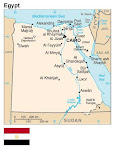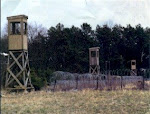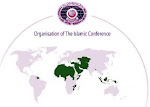 After years of battling al-Qaeda on land, Western forces now face a terrorist war at sea. In a recent communiqué, the Islamist organization claimed responsibility for this year’s surge in pirate attacks in the vital Gulf of Aden off the coast of Somalia. Dozens of vessels from different nations have been seized and held for ransom, shaking the world’s shipping industry. Al-Qaeda calls its maritime campaign “a new strategy which permits the mujahedeen” to hijack shipping, since “fighters who aspire to establish the caliphate must control the seas and the waterways.”
After years of battling al-Qaeda on land, Western forces now face a terrorist war at sea. In a recent communiqué, the Islamist organization claimed responsibility for this year’s surge in pirate attacks in the vital Gulf of Aden off the coast of Somalia. Dozens of vessels from different nations have been seized and held for ransom, shaking the world’s shipping industry. Al-Qaeda calls its maritime campaign “a new strategy which permits the mujahedeen” to hijack shipping, since “fighters who aspire to establish the caliphate must control the seas and the waterways.”Counterterrorism consultant Olivier Guitta revealed the al-Qaeda connection in his Asia Times column, writing that the terrorist organization “intends to take control of the Gulf of Aden and the southern entrance of the Red Sea.” Guitta called the area “strategic” for the radical Islamic group.Al-Qaeda’s goal is the removal of Western military bases from the Arabian Peninsula. It believes sea lanes “weakened by acts of piracy,” combined with mujahedeen attacks, will force concessions from Western powers. And while Al-Qaeda has not abandoned its more traditional tactics – it has a presence in both Somalia and Yemen and attacked the American embassy in Yemen this month, killing 16 – the organization is increasingly focusing its terror on the high seas.Al-Qaeda’s sea war is already having an effect. Piracy attacks have increased so dramatically in the Horn of Africa that a London-based International Maritime Bureau (IMB) spokesman called the waters off Somalia, a Muslim country, the most dangerous in the world. A failed state, Somalia has possessed neither a navy nor a central government since 1991 – factors exploited by criminal organizations and al-Qaeda, sometimes working together. As a result, in the first two weeks of September alone, Somali pirates attacked 17 ships, four more than in all of 2007, and last week captured a Ukrainian ship carrying 33 T-70 tanks. “In my time here, I must say, this is the most concentrated period of destabilizing activity I have seen in the Gulf of Aden,” said Keith Winstanley, a British naval officer patrolling the gulf.Altogether, piracy accounts for about 60 attacks against oil tankers and cargo vessels in the Gulf of Aden this year. Most scandalous, however, is that these maritime terrorists are currently holding 14 ships and 300 of their crewmen for large ransoms in Eyl, a pirate town in northern Somalia. On Sunday, the terrorists demanded $20 million for the Ukrainian ship alone, although ransoms for most other captive ships are in the $1-3 million range.The Gulf of Aden is not a sea route ships can avoid. Situated at the southern end of the Arabian Peninsula between Somalia and Yemen, the 2,500-mile waterway is strategic for the world’s economy. It connects Europe and North America with Asia and East Africa via the Suez Canal. About 1,500 ships, ten percent of global shipping traffic, pass through it every month, including four percent of the world’s daily crude oil supply. The only alternative route, around South Africa’s Cape of Good Hope, is thousands of miles longer and much more expensive, considering larger ships cost about $20,000 daily to run. As it is, the financial costs of piracy in the Gulf of Aden are high enough. The pirates stand to gain an estimated $50 million dollars in ransom money this year. But this sum does not include the losses shipping companies incur for their ships’ inactivity after capture. Increased insurance rates and thousands of dollars in extra fuel consumption costs from ships traversing the gulf at higher than normal speeds to avoid pirates are additional financial burdens facing owners.
The threat that piracy in the Horn of Africa poses to international trade and to freedom of movement is substantial. After two of its vessels were hijacked last month, a major Malaysian shipping company, MISC Berhad, announced that its ships are going to stop using the Gulf of Aden.World leaders also are waking up to the problem. The United Nations passed a resolution last June giving countries permission to pursue pirates into Somali territorial waters, while French President Nicholas Sarkozy recently sent commandos to wrest an elderly French couple and their yacht from Somali pirates.The U.S. also has gotten involved. As an anti-piracy measure, the United States in August established a protected shipping corridor in the gulf that Combined Task Force 150, an international naval force under US 5th Fleet command, is patrolling. But although the CTF has thwarted 12 pirate hijackings since then, ships are still being attacked, even in the protected zone, indicating the extent and strength of the piracy problem. Captains are now even being told to traverse the gulf in convoy.The IMB estimates that about 1,000 pirates are active in the gulf. One sailor, a pirate prisoner for 174 days, said his captors are well-organized in groups of 15-20. Armed with Kalashnikov rifles, rocket-propelled grenades and scaling ladders, they operate hundreds of miles off shore from two or three larger “mother” ships, from which they launch their attacks in speed boats against unsuspecting victims. Naval officer Winstanley said there was a degree of organization in their attacks, “Which is why we are taking action.”Security experts fear the ransom money the pirates are receiving will allow them to buy better equipment and weapons for larger operations. Another concern focuses on the threat to the world’s energy supply. A Japanese tanker, for example, was hit with a rocket-propelled grenade last year, spilling hundreds of barrels of oil into the gulf. A spate of successful sinking would see sky-rocketing oil prices climb even higher.Such financial disruption would please al-Qaeda, since it has long targeted the American economy for destruction. It knows the Western world derives its military and cultural strength from its economic power, hence its attack on the World Trade Center. Al-Qaeda also wants to draw America into as many Gulf of Aden-type military sideshows as possible in order to drain American resources.That may prove a fatal error. A sudden, resolute attack on the pirates’ Somali bases would sink al -Qaeda’s high seas terror war and restore calm to the waters of the vital Gulf of Aden. Before long, the terrorist organization may discover that its chances against American forces are no better on sea than they are on land.
By Stephen Brown
As in the days of Noah....






















































































.bmp)

























.bmp)